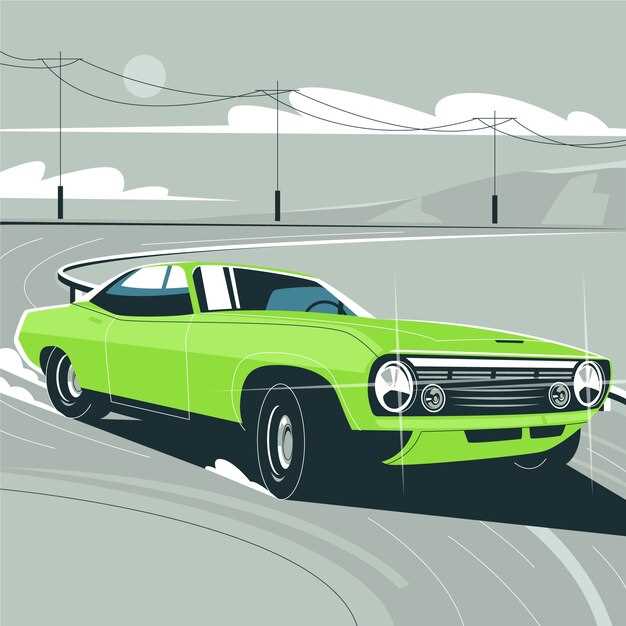
The Porsche 944, introduced in the early 1980s, marked a significant evolution in the company’s trajectory, blending performance with practicality. This model emerged as a cornerstone in Porsche’s lineup, offering a new perspective on the brand’s ethos of sports car engineering and driving enjoyment. The integration of a transaxle layout not only enhanced the car’s weight distribution but also solidified its reputation for exceptional handling, a hallmark of Porsche vehicles.
During the 1980s, the Porsche 944 played a pivotal role in redefining the brand’s identity. Positioned as a more accessible alternative to the iconic 911, it broadened Porsche’s appeal to a wider audience without compromising the essence of performance. As the automotive landscape evolved, so did Porsche’s innovations, with the 944 showcasing technological advancements that would influence subsequent models and invigorate the brand’s sporting legacy.
The introduction of the transaxle system in the 944 presented a harmonious blend of engineering ingenuity and performance attributes. By positioning the transmission at the rear of the car, engineers achieved optimal weight distribution, resulting in enhanced stability and agility on the road. This technology not only set the stage for future developments within the brand but also contributed to a distinguished reputation that would span decades.
How the Transaxle Design Enhances Porsche 944 Performance
The Porsche 944 is renowned for its exceptional handling and performance, largely attributed to its innovative transaxle design. This unique engineering approach significantly impacts the driving dynamics and overall efficiency of the vehicle.
Key aspects of the transaxle design include:
- Weight Distribution: The transaxle configuration positions the gearbox and differential at the rear of the car. This layout helps to achieve a near-perfect 50/50 weight distribution, enhancing stability and cornering performance.
- Lower Center of Gravity: By placing the transaxle towards the rear, the 944 lowers its center of gravity. This design improves the car’s balance and reduces body roll during aggressive maneuvers.
- Efficient Power Transfer: The transaxle design allows for a more direct and efficient connection between the engine and the rear wheels. This results in quicker acceleration and responsiveness, critical for sports cars.
- Improved Handling: The distribution of mass and low center of gravity contribute to better handling characteristics. The 944 is known for its agile response to steering inputs, allowing drivers to navigate tight corners with precision.
Overall, the transaxle design of the Porsche 944 is crucial to its performance. It not only optimizes weight distribution and balance but also enhances the driving experience by providing superior handling and acceleration. This engineering choice has left a lasting legacy in the Porsche lineup, influencing subsequent models and reaffirming the brand’s commitment to performance and innovation.
The Porsche 944’s Role in Expanding the Brand’s Consumer Base

The Porsche 944 emerged in the early 1980s as a pivotal model for the brand, providing a more accessible entry point into the world of Porsche. Positioned between the iconic 911 and more economical cars, the 944 attracted a broader audience, particularly younger enthusiasts and those potentially new to the luxury sports car market.
This model was designed with a perfect blend of performance and practicality, which set it apart from the more expensive 911. The 944 offered a well-balanced 2.5-liter inline-four engine, delivering a respectable power output that ensured an engaging driving experience without compromising on daily usability. Such versatility catered not only to classic sports car fans but also to individuals seeking a stylish yet functional vehicle.
The pricing strategy of the 944 further contributed to its role in expanding Porsche’s consumer base. By providing a luxury sports car at a lower price point, it made the Porsche brand more attainable for a wider demographic. This pricing shift played a crucial role in capturing the interests of aspiring buyers who wished to own a piece of Porsche’s performance heritage without overextending their finances.
Moreover, the Porsche 944 benefited from effective marketing that highlighted its innovative features, such as front-engine layout and a transaxle transmission system, which provided balanced weight distribution and improved handling. These unique attributes attracted not only loyal Porsche fans but also new customers who were intrigued by the technological advancements and design philosophy of the brand.
The influence of the 944 extended beyond immediate sales figures. By appealing to a younger audience, the 944 helped foster a new generation of Porsche enthusiasts who would eventually contribute to the brand’s long-term loyalty and growth. The model became a gateway for many to experience the Porsche lifestyle, leading to increased brand loyalty and the potential for future purchases of higher-end models.
In summary, the 944’s introduction was a strategic move that significantly broadened Porsche’s consumer base during the 1980s. Its combination of performance, accessibility, and innovative design not only rejuvenated the brand’s image but also set the foundation for a wider audience to appreciate the allure of Porsche vehicles.
Maintenance Insights for Porsche 944 Owners in the 1980s

The Porsche 944, introduced in the early 1980s, became a symbol of sportiness and affordability in the automotive world. Ensuring proper maintenance of this vehicle was crucial for owners wanting to preserve its performance and longevity. Regular service intervals recommended by Porsche included oil changes every 3,000 miles or six months, whichever came first. Utilizing high-quality synthetic oil was advised to maximize engine life.
An important aspect of maintaining the 944 was monitoring its coolant system. The model featured a front-engine layout with a water-cooled design, necessitating routine checks of the coolant level and condition. Owners were encouraged to flush the cooling system every two years to prevent overheating and potential engine damage.
The timing belt was another critical component requiring attention; it needed replacement every 30,000 miles. Failing to adhere to this schedule could result in catastrophic engine failure. Owners were advised to inspect the belt regularly and consider changing the water pump simultaneously since both components rely on similar labor for accessibility.
The suspension system of the Porsche 944 required periodic assessments to ensure optimal handling and ride quality. Owners should have the alignment checked after significant mileage or any noticeable changes in handling. Regular inspections of the shock absorbers, struts, and bushings could prevent more expensive repairs down the road.
Tire maintenance was essential for maximizing the performance of the 944. Rotating tires every 5,000 miles and ensuring proper inflation not only enhanced handling but also promoted even tire wear. Owners should also seek out tires that matched the car’s performance capabilities, given its sporty nature.
Lastly, the electrical system in the 944, while generally reliable, could present challenges if neglected. Routine checks of battery condition, connections, and fuses were essential. Owners should also be vigilant about maintaining the integrity of wiring, especially due to the age of the vehicles during the 1980s.
In summary, diligent maintenance practices were fundamental for Porsche 944 owners. Following the manufacturer’s guidelines not only ensured reliability but also enhanced the driving experience, allowing enthusiasts to fully enjoy the attributes that made the 944 a standout model of its time.
 Skip to content
Skip to content





